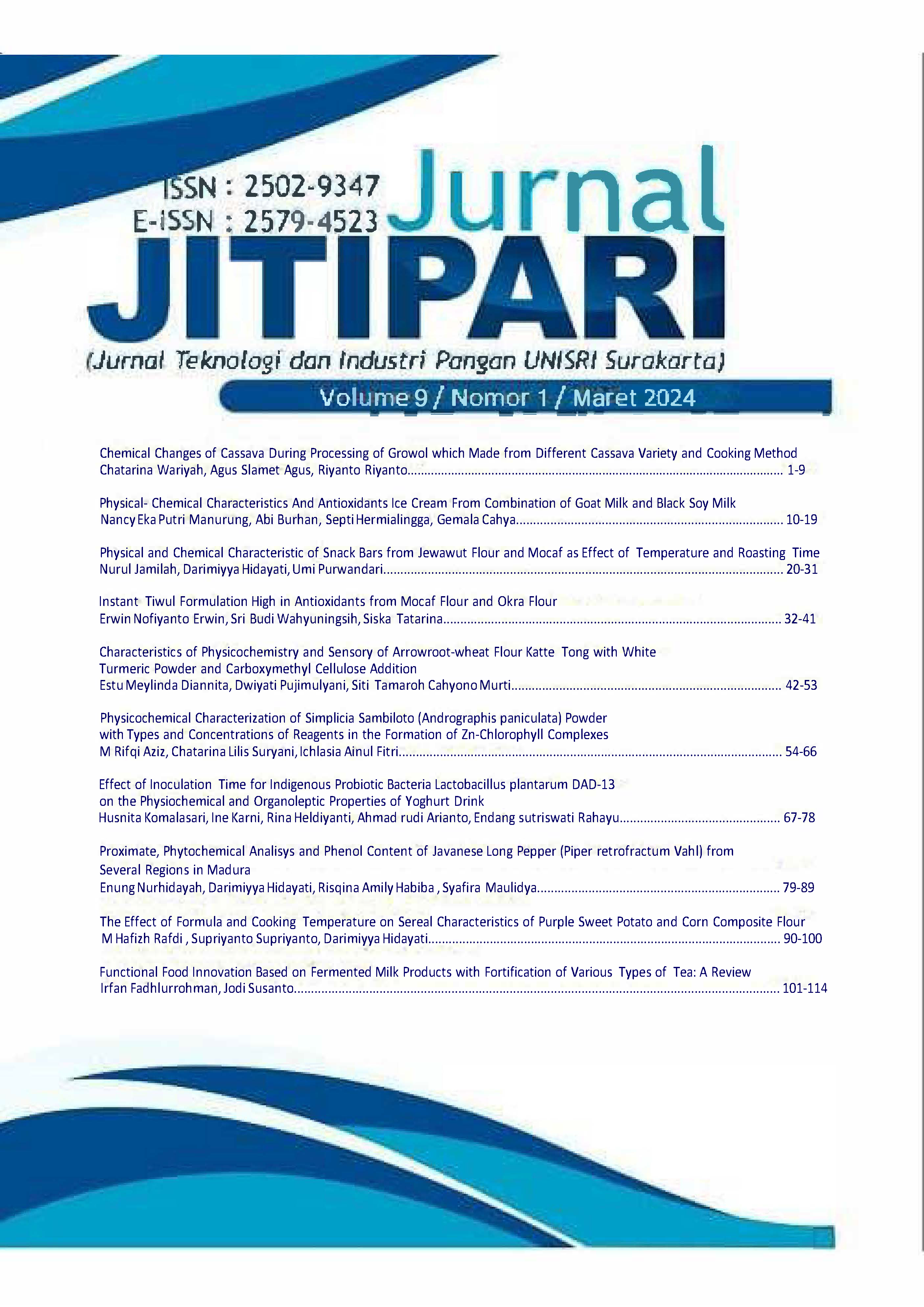Physical- Chemical Characteristics And Antioxidants Ice Cream From Combination of Goat Milk and Black Soy Milk
Karakteristik Fisik dan Kimia serta Antioksidan Es Krim Kombinasi Susu Kambing dan Susu Kedelai Hitam
DOI:
https://doi.org/10.33061/jitipari.v9i1.9193Abstract
This research aims to determine the physical and chemical, and antioxidant qualities of the combination of goat milk and black soy milk. This method used x+y+z formulation by combining goat milk and black soy milk which were the main ingredients in making ice cream. Ice cream was measured for physical quality (melting point and overrun); chemical (total solids and fat content, free fatty acids); and antioxidant qualities. The results showed that giving black soy milk can lower the melting point of ice cream due to the resulting low overrun. This was also supported by an increase in total solid ice cream. The highest ice cream fat content was in the 75:25 combination, namely 4.87%. The longer the storage of ice cream, the higher the increase in free fatty acids and the lower the antioxidant activity of ice cream. The conclusion of this study was the best quality to make ice cream from the combination of goat milk ice cream and black soy milk 75:25.
Downloads
Published
How to Cite
Issue
Section
License
Copyright (c) 2024 NANCY EKA PUTRI MANURUNG

This work is licensed under a Creative Commons Attribution-ShareAlike 4.0 International License.
Authors who publish this journal agree to the following terms:
- Authors retain copyright and grant the journal right of first publication with the work simultaneously licensed under a Creative Commons Attribution-ShareAlike 4.0 International (CC BY-SA 4.0) that allows others to share the work with an acknowledgement of the work's authorship and initial publication in this journal.
- Authors can separately make additional contractual arrangements for non-exclusive distribution published by the journal (e.g., publish it in a book), with an acknowledgement of its initial publication in this journal.
- Authors are allowed and encouraged to send their work via online (e.g., in the institutional repositories or their website) after published by the journal.










